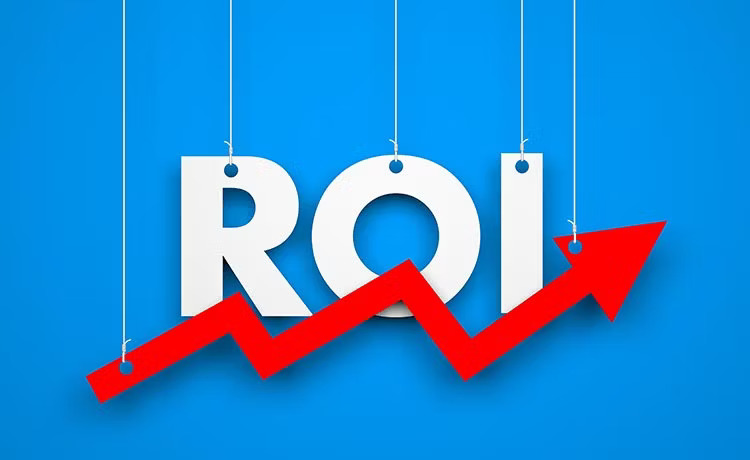
Customer Relationship Management (CRM) tools are meant to streamline sales, marketing, and customer service—but in many organizations, they’re doing the opposite. Instead of empowering marketing teams, some CRMs are acting as roadblocks, preventing efficient campaign execution and skewing performance metrics. In 2025, where marketing needs to be data-driven and agile, a slow or poorly implemented CRM can quietly kill your marketing ROI.
Many marketers rely heavily on CRM data to segment audiences, trigger automations, and measure campaign success. But outdated systems, bad integrations, and clunky workflows often result in poor data hygiene, lead leakage, and misaligned communication. The result? Wasted spend, frustrated teams, and missed revenue opportunities.
Common Ways Your CRM Sabotages ROI –
Most marketing teams don’t even realize that their CRM is hurting performance until it’s too late. Problems creep in subtly—leads disappear, email targeting is off, and sales doesn’t trust the data. These issues make it impossible to deliver personalized marketing or measure campaign effectiveness.
Additionally, a poorly set up CRM can slow down campaign launches, delay lead follow-ups, and confuse customer journey mapping. Instead of serving as the central hub for insights and automation, it becomes a technical burden, especially when owned by multiple departments with no clear data governance strategy.
Warning Signs Your CRM Is Hurting ROI:
- Leads go unassigned or sit idle in the system
- Inaccurate or duplicate contact records skew targeting
- Marketing and sales teams have different versions of “the truth”
- Campaign tracking and attribution are inconsistent
- Integrations with automation tools are unreliable or broken
Data Chaos: The Silent Killer of Campaign Performance –
At the core of most CRM issues is bad data. Without clean, up-to-date, and complete data, marketing campaigns can’t perform. If you’re sending emails to old contacts, triggering workflows based on outdated info, or misreporting campaign results because of data lags, you’re throwing away money.
CRMs often become graveyards for leads that never move through the funnel because they’re improperly scored or not enriched with useful details. This leads to wasted ad spend and lower conversion rates. And when reporting data is unreliable, CMOs can’t defend the marketing budget—because the numbers don’t tell the full story.
Data-Related CRM Issues to Watch For:
- Outdated or incomplete customer profiles
- Lack of behavioral or engagement tracking
- No lead scoring or poor lead qualification logic
- Manual data entry leading to errors and omissions
- Siloed data from disconnected tools or departments
Fixing the Problem: Making Your CRM Work for You –
The good news? These issues are fixable. The key is to treat your CRM not just as a database, but as a living system that requires regular updates, cleanups, and process optimization. Start by conducting a full CRM audit—look for duplicated fields, automation errors, inactive users, and poor data entry practices. Then, implement a standardized data governance framework across departments.
Another critical fix is better alignment between sales and marketing. Both teams should define lead stages, scoring models, and qualification criteria together. Automations must be tested regularly, and integrations with other platforms—like email marketing tools, ad platforms, and analytics software—should be tightly connected and monitored.
How to Optimize Your CRM:
- Perform regular audits and cleanups of contact data
- Align sales and marketing teams on lead definitions and goals
- Create standardized processes for entering and managing data
- Use AI-powered tools for data enrichment and deduplication
- Ensure seamless integration with marketing platforms
Future-Proofing Your CRM for Marketing Success –
Looking ahead, a CRM should evolve with your marketing strategy. Invest in platforms that offer native integrations, real-time analytics, and AI-driven recommendations. Make sure your CRM doesn’t just collect data—but actually helps you act on it intelligently. Use segmentation and personalization tools built into your CRM to drive targeted campaigns that convert.
Also, training is key. Your team must know how to use the CRM properly, and leadership must invest in keeping the system flexible and responsive to changing marketing needs. With the right setup, your CRM can become your most powerful marketing asset—rather than a silent killer of your ROI.
Features to Look for in a Modern CRM:
- Real-time reporting dashboards
- AI-driven lead scoring and recommendations
- Built-in marketing automation tools
- Flexible integrations with other platforms
- Advanced segmentation and personalization capabilities
Conclusion –
In 2025, marketing is all about speed, personalization, and accurate performance tracking—and if your CRM can’t support that, it’s dragging you down. Many companies lose thousands in ROI every month because of silent CRM issues that go unnoticed until revenue starts to dip. The fix isn’t always replacing the platform; often, it’s about better processes, cleaner data, and improved collaboration across teams.
So before you pour more money into ad campaigns, make sure your CRM is ready to handle the results. With the right setup, your CRM can stop being a liability—and start becoming your competitive edge.

